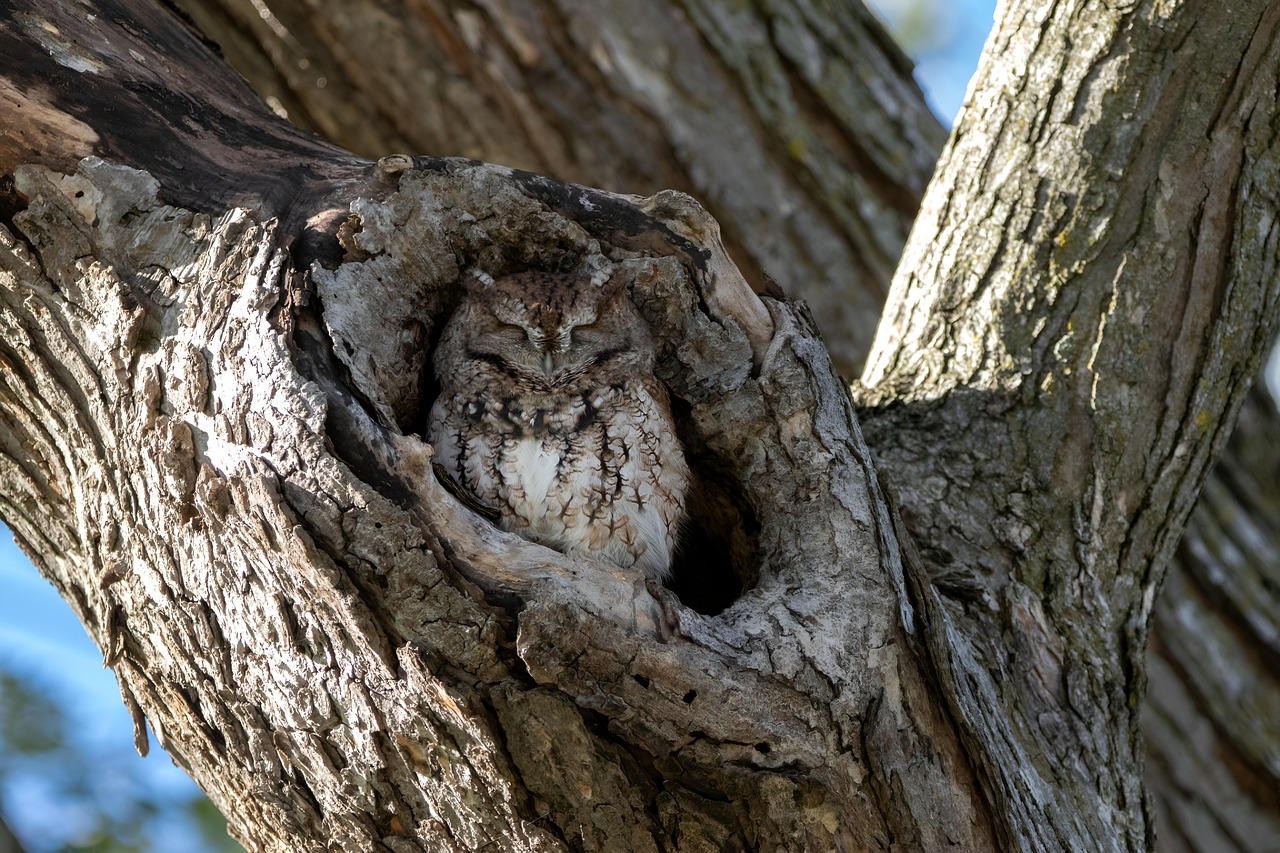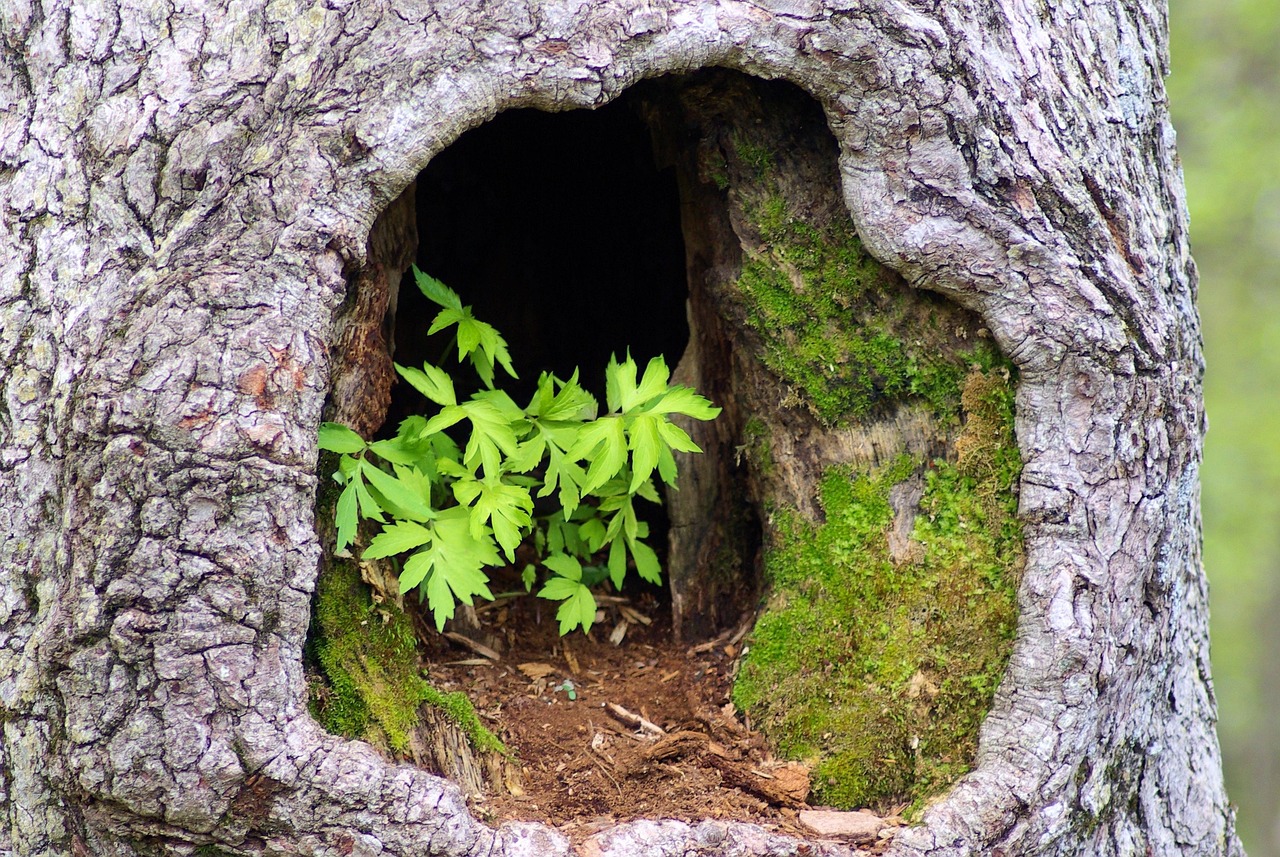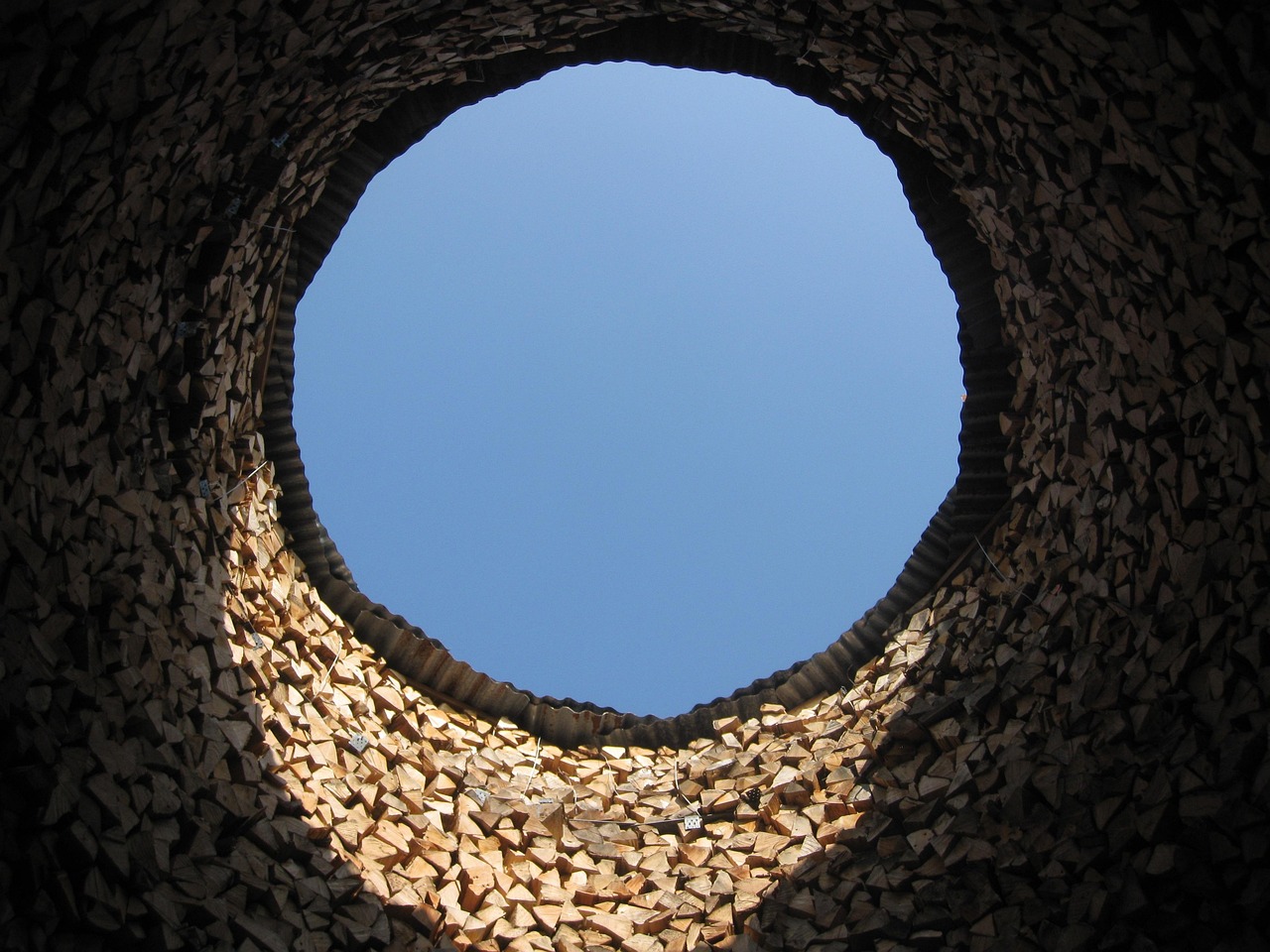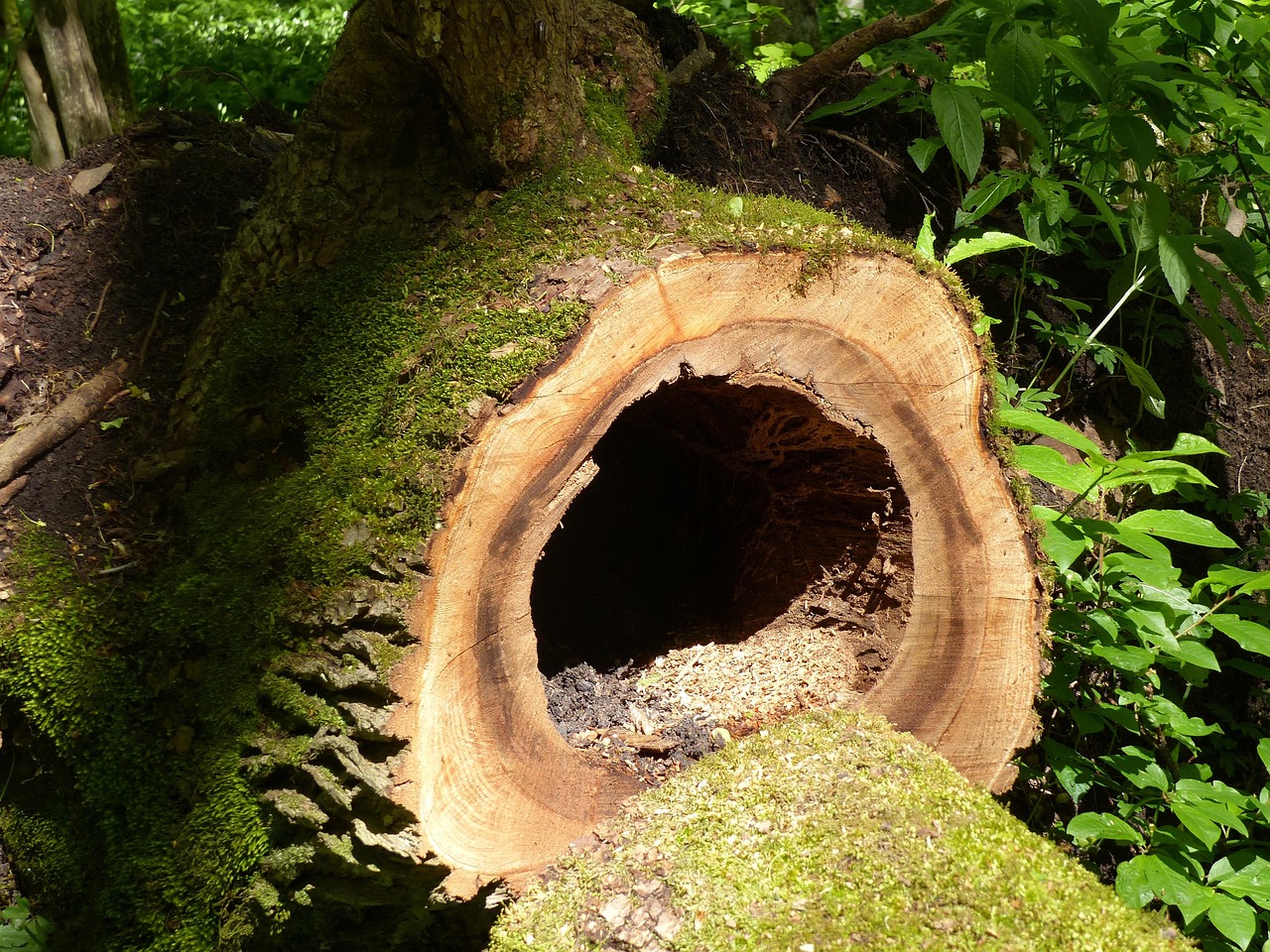Hollow Trees: How to Spot and Prevent Damage Before It’s Too Late
Hollow trees can pose serious risks to both the environment and nearby structures. To spot a hollow tree, look for signs such as cracks in the bark, soft or spongy wood, and visible holes. Preventing damage involves regular inspections and prompt action when issues are detected.
Trees are an essential component of our ecosystems. They provide shelter, improve air quality, and contribute to the aesthetic value of landscapes. However, like all living things, trees can suffer from various conditions that may compromise their health. One such condition is the formation of hollows within the trunk or branches. Hollow trees can be a sign of decay, disease, or pest infestation.

Understanding how to identify and address the issues associated with hollow trees is crucial for homeowners, landscapers, and arborists alike. Not only do hollow trees present a safety hazard, but they can also affect the overall health of the surrounding environment. A hollow tree may eventually collapse, potentially causing harm to people or property nearby.
What Causes Hollow Trees?
Several factors can lead to the formation of hollows in trees. These include natural processes and external influences. Here are some of the most common causes:
- Decay: Fungal infections can penetrate the tree’s bark, leading to wood decomposition.
- Pest Infestation: Insects, such as wood-boring beetles, can damage the tree’s structure and make it susceptible to hollowing.
- Physical Damage: Injuries from storms, falling branches, or improper pruning can create entry points for pathogens.
- Old Age: As trees age, their internal structure naturally deteriorates, increasing the likelihood of hollow formation.
Identifying Hollow Trees

Spotting a hollow tree early is vital for managing potential risks effectively. There are several visual indicators and physical signs that can help you identify hollow trees:
- Cracks and Splits: Look for vertical cracks in the bark or splits that indicate internal damage.
- Brittle Bark: If the bark feels loose or crumbles easily, this could indicate decay underneath.
- Soft or Spongy Wood: Tap on the trunk. A hollow sound or soft texture may suggest internal rot.
- Visible Holes: Insects may create holes in the bark. Larger openings may indicate significant decay.
Regular inspections are essential in maintaining tree health. It is advisable to perform checks at least once a year or after severe weather events. During these inspections, look for any signs of distress or deterioration.
The Importance of Prevention

Preventing damage to hollow trees not only ensures safety but also contributes to preserving the ecological balance. Here are some effective methods to manage and prevent further damage to hollow trees:
| Prevention Method | Description |
|---|---|
| Regular Inspections | Conduct annual checks for signs of hollowness or decay. |
| Proper Pruning | Use appropriate techniques to minimize damage during trimming. |
| Pest Control | Implement measures to prevent pest infestations. |
| Fungal Treatments | Apply treatments to combat fungal infections early on. |
By taking these preventive steps, you can help maintain your trees’ structural integrity and health. Remember that a proactive approach is essential for any tree care strategy.
Signs of a Hollow Tree
Identifying a hollow tree is crucial for timely intervention. Recognizing the signs early can prevent further damage and potential safety hazards. Below are some common indicators to look for while inspecting your trees:
- Decay Odor: A noticeable smell of decay around the base of the tree can indicate internal rot.
- Fungal Growth: The presence of mushrooms or other fungi growing at the base or on the trunk is a strong sign of decay.
- Excessive Leaf Drop: Trees that are hollow may exhibit an unusual amount of leaf drop, particularly during the growing season.
- Visible Cavities: If you can see holes or cavities in the trunk, it is a clear sign that the tree may be hollow.
It’s important to monitor these signs consistently, especially if the tree is aging or has experienced physical damage. Regular monitoring allows for timely response to any issues that arise.
Assessing Tree Health
Proper assessment of tree health goes beyond identifying hollows. Understanding the overall health of a tree can help in making informed decisions regarding its care. Here are some factors to consider when assessing tree health:
- Tree Crown: Examine the crown for even leaf distribution. Sparse leaves or small leaves can indicate stress.
- Bark Condition: Healthy bark should be intact and free from discoloration or lesions. Check for peeling or flaking bark.
- Root Stability: Assess the roots for any visible signs of decay or instability, as this can affect the tree’s overall health.
- Growth Patterns: Look for irregular growth patterns, which may suggest underlying problems such as nutrient deficiencies.
If any of these signs are present, it is advisable to consult with a professional arborist for a thorough evaluation and potential treatment options.
Risk Factors for Hollow Trees
Certain risk factors can increase the likelihood of a tree becoming hollow over time. Understanding these factors aids in prevention and management:
- Environmental Stress: Changes in environmental conditions, such as drought or soil compaction, can weaken a tree’s structure.
- Species Susceptibility: Some tree species are more prone to hollowing due to their biological makeup.
- Inadequate Maintenance: Neglecting regular maintenance such as pruning can lead to increased vulnerability to pests and diseases.
- Proximity to Buildings: Trees located too close to structures may experience physical stress, increasing the risk of damage.
Awareness of these risk factors enables homeowners and property managers to take proactive measures to protect their trees. Regular care and attention can significantly extend a tree’s lifespan.
When to Consult a Professional
While many signs of hollow trees can be identified through casual observation, certain situations necessitate professional involvement. It is advisable to consult an arborist in the following cases:
- If you notice significant structural damage or extensive hollowness within the trunk.
- When fungal growth becomes widespread and difficult to manage without professional help.
- If the tree poses a potential hazard to people or property due to its location or condition.
- When you are unsure how to properly care for a tree showing signs of distress.
An arborist can provide expert advice on treatment options, maintenance strategies, and whether the tree should be removed or treated. Their expertise ensures that you make informed decisions about your trees’ health and safety.
Managing Hollow Trees
If you discover that a tree is hollow, there are several management strategies you can consider based on its condition:
- Monitoring: Keep an eye on the tree’s condition over time. Regular assessments will help track any changes.
- Treating Minor Issues: If the hollowness is minimal, consider treatments such as injecting fertilizers or fungicides.
- Support Systems: For trees showing minor hollowness but still structurally sound, installing support systems may help stabilize them.
- Removal: In cases where the tree poses a significant risk, removal may be the best option to ensure safety.
Effective management is essential for maintaining a healthy landscape and reducing risks associated with hollow trees. Taking proactive measures can mitigate potential dangers while promoting overall tree health.

Common Tree Species Prone to Hollowing
Understanding which tree species are more susceptible to hollowing is essential for prevention and management. Certain species have characteristics that make them more vulnerable to decay, pests, and environmental stressors. Here are some common tree species that are often prone to hollowing:
- Maple: Maple trees can develop hollows due to their softer wood and susceptibility to fungal infections.
- Elm: Elms are known for their rapid growth, but this can lead to weak wood that is prone to hollowing.
- Pine: Certain pine species can suffer from wood-boring pests that create hollow areas in the trunk.
- Willow: Willows are often found near water but can be susceptible to decay due to their wet environment.
Being aware of these species can help tree owners take preventive measures early on. Regular inspections and maintenance are particularly important for these trees, as they may require more attention than others.
The Role of Climate and Environment
The environment plays a significant role in the health of trees and their potential for becoming hollow. Factors such as climate, soil quality, and local wildlife can all impact tree growth and decay. Here are some environmental considerations:
- Soil Quality: Poor soil conditions can lead to weak root systems, making trees more susceptible to stress and decay.
- Water Availability: Inadequate or excessive water can weaken a tree’s structure. Drought stress may lead to cracks, while overwatering can promote root rot.
- Temperature Extremes: Extreme temperatures can cause bark splitting or other damage, increasing vulnerability to pests and disease.
- Wildlife Interaction: Animals such as woodpeckers may create holes in trees searching for insects, further compromising the tree’s integrity.
By understanding how environmental factors influence tree health, you can take proactive measures to mitigate risks associated with hollowing. Adjusting care practices based on local conditions may significantly enhance tree resilience.
Tree Care Practices to Prevent Hollowing
Implementing effective tree care practices can help reduce the risk of hollowness in trees. Here are some essential practices to consider:
- Proper Watering: Ensure your trees receive adequate water without over-saturating the soil. Adjust your watering schedule based on seasonal changes.
- Nutrient Management: Use fertilizers appropriately to provide the right nutrients for healthy growth. Soil tests can help determine specific needs.
- Regular Pruning: Prune dead or damaged branches regularly to improve airflow and sunlight penetration, reducing the risk of disease.
- Pest Control: Monitor for signs of insect infestations. Early detection allows for prompt treatment, preventing further damage.
Adopting these practices not only promotes overall tree health but also enhances resistance to diseases that may lead to hollowness.
The Importance of Community Awareness
Raising awareness about hollow trees within the community is vital for collective efforts in tree care. Here are ways communities can engage in preventing hollow trees:
- Educational Workshops: Organize workshops that educate homeowners and landscapers on tree care and the importance of monitoring trees for signs of hollowness.
- Community Tree Planting: Engage in local tree planting initiatives that encourage planting resilient species less prone to hollowness.
- Volunteer Programs: Establish programs where community members can participate in regular tree inspections and maintenance efforts.
- Collaboration with Arborists: Partner with local arborists for advice and support in maintaining community trees.
Community involvement fosters a culture of caring for trees, enhancing urban forestry efforts and contributing to healthier environments for all residents.
Using Technology for Tree Monitoring
Advancements in technology provide new opportunities for better monitoring and managing tree health. Here are some technological tools that can be utilized:
- Drones: Drones equipped with cameras can survey large areas quickly, identifying potential issues with tree health from above.
- Sensors: Soil moisture sensors can help monitor water levels around trees, ensuring they receive appropriate hydration.
- Aerial Imaging: High-resolution images can reveal changes in tree canopy health over time, allowing for proactive management strategies.
- Mobile Apps: There are various apps available that assist in tracking tree health and identifying signs of disease or decay.
Utilizing these technologies can make it easier for individuals and communities to monitor tree health effectively, leading to timely interventions when issues arise.
Implementing a Tree Care Plan
Creating an effective tree care plan is essential for maintaining healthy trees and preventing issues such as hollowness. A comprehensive plan should include regular monitoring, preventative measures, and community involvement. Below are key components to consider when developing your tree care strategy:
- Scheduled Inspections: Set up a regular schedule for inspecting your trees, ideally every six months, to catch any signs of decay or distress early.
- Documentation: Keep records of each inspection, noting any changes in the tree’s condition. This information can help track the health over time.
- Emergency Action Plan: Develop a response plan in case a tree becomes hazardous. This should include who to contact for professional help and what immediate steps to take.
- Community Engagement: Encourage neighbors to participate in tree care initiatives. This could involve organizing tree planting events or maintenance days.
By systematically implementing these components, you can ensure that your trees remain healthy and resilient against the various challenges they may face.
Potential Legal Considerations
Understanding the legal aspects related to tree care is also important, especially when dealing with hollow trees that may pose risks. Here are some key points to consider:
- Liability: Homeowners can be held liable if a tree on their property causes damage or injury. Regular inspections can help mitigate this risk.
- Local Ordinances: Some municipalities have specific regulations regarding tree maintenance and removal. Familiarize yourself with local laws to ensure compliance.
- Neighboring Trees: If a tree’s roots encroach on a neighbor’s property, it may lead to disputes. Open communication with neighbors about tree health can help prevent conflicts.
Being proactive in understanding your legal responsibilities can save you from potential disputes and ensure that your trees are well-maintained and safe.
Final Thoughts
Hollow trees represent a significant concern for property owners and communities alike. By understanding how to identify the signs of hollowing, recognizing the risk factors involved, and implementing effective management strategies, you can protect your trees and the safety of those around them. Regular monitoring, proper maintenance, and community awareness are crucial elements in preventing tree damage before it becomes serious.
Utilizing technology, engaging with professionals, and educating your community can further enhance your efforts in tree care. As stewards of our environment, it is our responsibility to ensure that our trees thrive, contributing to healthier ecosystems and safer surroundings.
With the right knowledge and proactive measures, you can effectively manage the health of your trees, ensuring they remain strong and vibrant for years to come. Embrace these strategies and foster a culture of care for trees in your community; the benefits will be felt by all.
